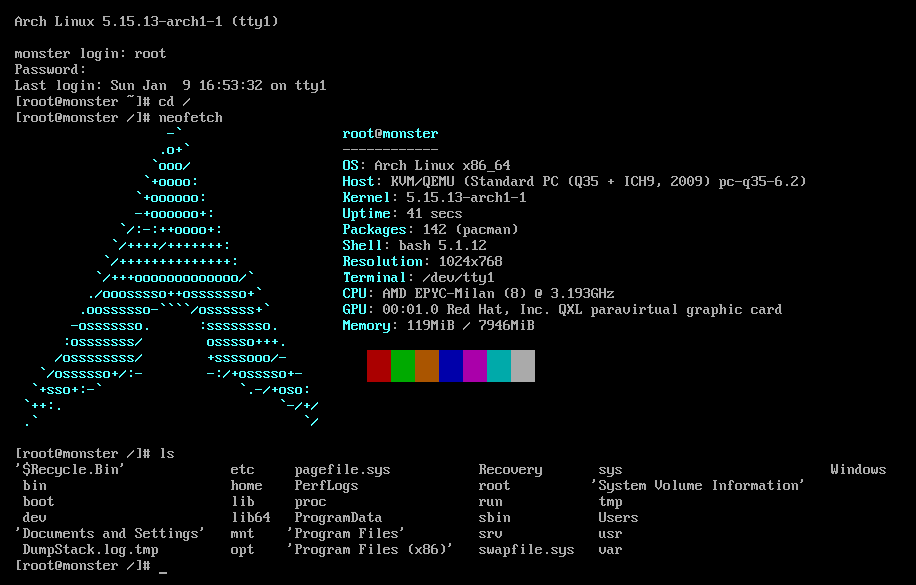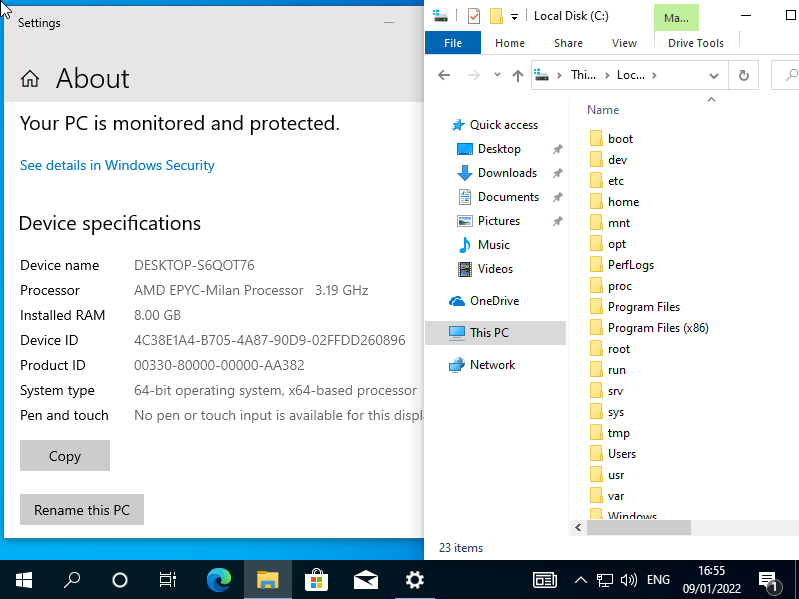Installing Windows and Linux on the same partition
Have you ever wanted to make God cry? If that's the case then this is the perfect post for you!

Have you ever wanted to make God cry? Perhaps you want to take revenge on one of your Computer Scientist friends? Maybe you just hate your laptop and want to see it suffer? If that's the case then this is the perfect post for you!
With the help of Paragon's new NTFS3 driver, it is now possible to install Linux on an NTFS partition. So, why not take it to the next level and install Windows on that partition as well?
Post contents
Requirements
- Arch Linux Installation ISO
- Microsoft Windows Installation ISO
- Optional: If you are insane enough to try this on a bare-metal system, you will also need a USB stick with the above ISOs burned onto it
- A lot of patience
Steps
-
Boot using the Arch Install ISO.
-
Format the target drive. In my case, that's
/dev/sda. It needs to have a GPT partition table and 2 partitions in total:- 1GB EFI Filesystem
- The rest of the drive (leave it unallocated for now)

- Shut down your system and boot using the Windows ISO.
- Make sure to select "Custom: Install Windows only (advanced)".

- Select the Unallocated Space we created earlier and finish the installation.

- Once the installation is complete, shut the system down and boot into the Arch ISO once again.
- Mount the Windows partition as
/mnt/archinstall. - Run the
archinstallinstallation script.

- When asked about which drives to configure, make sure to not select anything.
- I also decided to use GRUB as my bootloader since I am more familiar with it, but you can use whatever you like.

- The install script will fail during GRUB's installation, so we must continue manually.
- Change root into the installation folder and install GRUB.

- Add the windows bootloader as a custom GRUB entry by editing
/etc/grub.d/40_custom. Make sure to replace{UUID}with your disk's UUID. You can get it by runningblkid /dev/sda1.
menuentry 'Windows 10' {
search --fs-uuid --no-floppy --set=root {UUID}
chainloader (${root})/EFI/Microsoft/Boot/bootmgfw.efi
}
- Add
rootfstype=ntfs3to your kernel parameters. You can do that by editing/etc/default/gruband appending it toGRUB_CMDLINE_LINUX_DEFAULT. - Run
grub-mkconfig -o /boot/grub/grub.cfgto regenerate the GRUB configuration. - Shut down your system. If everything went well, you should be able to boot into both Windows and Linux from the same partition.
- I recommend backing up your drive at this point since you can boot about 5 times before your system nukes itself.
- Done!


Conclusion
If you have successfully followed this post... why? Go see a therapist. Original idea by u/fabi_sh on Reddit.